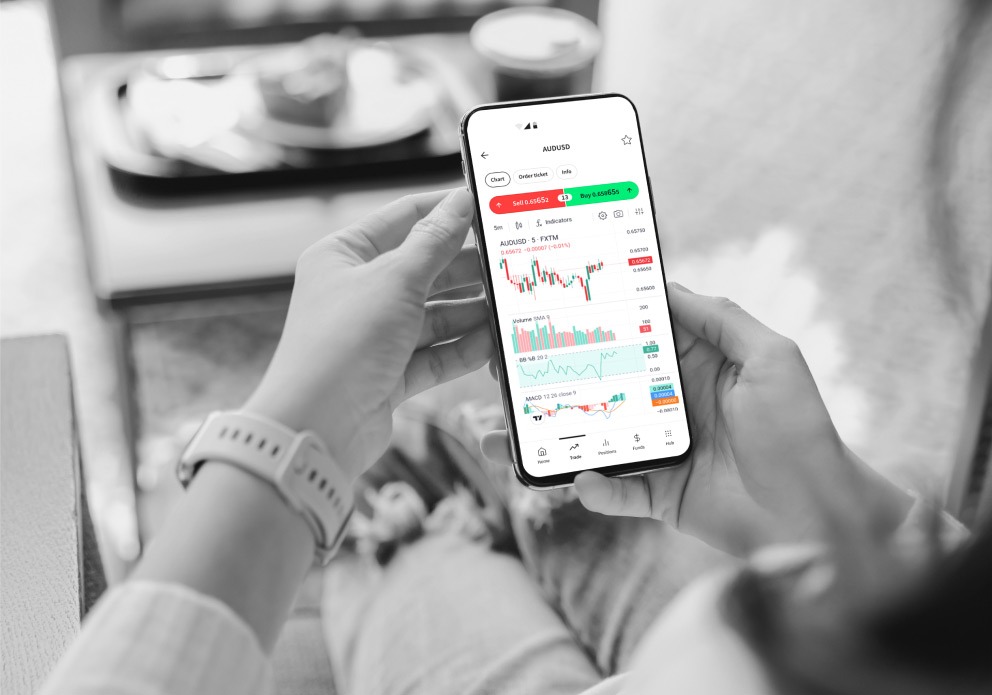Copy trading has grown into one of the most practical approaches for traders who prefer data-driven execution over constant market analysis. In 2025, this method continues to attract both beginners and experienced investors looking to diversify strategies or automate parts of their portfolios. Choosing the best platform depends on understanding how copy trading works, what to look for in providers, and how to evaluate traders before committing funds.
What Is Copy Trading and How Does It Work?
Copy trading allows one trader (the follower) to automatically replicate the trades of another (the signal provider). The system mirrors each position in proportion to the follower’s balance, maintaining the same trade direction and risk ratio. This approach eliminates the need for independent trade analysis, letting followers rely on others’ strategies while retaining full control over their funds.
The process usually involves three steps:
- Register on a copy trading platform.
- Browse available signal providers and review their performance data.
- Allocate funds to copy the chosen trader.
Trades appear in the follower’s account in real time. The level of automation and customization varies among platforms — some allow editing positions, while others execute trades automatically.

Basic Idea Behind Copy Trading
The idea originated in the early 2010s when traders began sharing their signals publicly through social networks and broker integrations. Modern systems expanded this concept, allowing automatic replication instead of manual copying.
Each trade opened by a signal provider is reflected in the follower’s account. The proportional system keeps the risk balanced: for instance, if the provider opens a 2% position, the follower also opens a 2% trade based on their equity. Profits and losses follow the same ratio. The follower can stop copying, adjust allocations, or close trades anytime, depending on the platform’s flexibility.
| Element | Description | Example |
| Signal Provider | Trader whose positions are copied | Experienced forex trader |
| Follower | Person replicating trades | Beginner investor |
| Copy Ratio | Allocation method based on balance | 2% of equity per trade |
| Control Level | Ability to close or modify trades | Varies by platform |
Manual vs Automated Copy Trading
Manual copy trading means following traders’ signals and executing orders manually after review. It allows more discretion but requires constant monitoring.
Automated systems, on the other hand, connect the follower’s account directly to the provider’s through an API or internal broker link. Once configured, trades execute instantly without user intervention.
| Type | Execution Method | Main Advantage | Main Limitation |
| Manual | User places trades after reviewing signals | Higher control | Requires time and discipline |
| Automated | System mirrors trades automatically | Saves time and avoids missed signals | Less manual oversight |
For most modern traders, automation has become the preferred option. It eliminates delays, ensures accuracy, and is particularly useful for those with limited trading hours.
Who Should Consider Using It?
Copy trading suits several trader profiles:
- Beginners who want to participate in the markets without mastering technical or fundamental analysis.
- Busy professionals who lack the time for day trading but want portfolio exposure.
- Diversifiers who already trade manually but wish to follow multiple strategies simultaneously.
- Investors exploring forex or CFD markets with limited prior experience.
However, copy trading is not passive income. It still requires monitoring, selection of reliable providers, and risk management. Platforms often display historical data, drawdowns, and risk metrics to help followers make informed choices.
Key Factors to Compare Platforms in 2025
Evaluating a copy trading platform involves more than checking a leaderboard. The differences often lie in execution speed, available assets, commission structure, and control over risk. In 2025, competition has increased, and platforms now focus on transparency, advanced analytics, and trader verification. Below are the core aspects that define reliability and performance.

Trading Fees and Commissions
Fees directly affect long-term profitability. Platforms may charge commissions per copied trade, performance-based fees, or spreads built into execution.
Three main pricing models are common:
- Fixed spread model — The cost per trade is integrated into the spread between bid and ask prices.
- Performance fee model — A percentage of profits earned from copied trades is paid to the provider.
- Subscription model — A flat monthly fee for following specific traders.
Available Traders to Copy
The success of a copy trading strategy largely depends on access to skilled and transparent signal providers. Reputable platforms display key performance metrics such as:
- Total return over time
- Average monthly profit
- Maximum drawdown
- Win rate and trade duration
Modern leaderboards now include filters for trading instruments (forex, indices, crypto, stocks) and account age. Systems also highlight verified traders using live accounts, helping users avoid those trading only in demo environments.
| Metric | Ideal Range | Why It Matters |
| Win rate | 55–70% | Reflects trade consistency |
| Max drawdown | Below 25% | Indicates stability |
| Account age | Over 6 months | Shows reliability |
| Active followers | 50+ | Suggests proven performance |
Choosing traders based on stable performance rather than short-term gains usually leads to better outcomes.
Platform Tools and Risk Management Features
Effective tools separate reliable copy trading systems from basic ones. A solid platform should include:
- Stop-copy limits — automatically halt copying after reaching a specific loss threshold.
- Drawdown control — restricts maximum loss percentage on an account level.
- Manual intervention options — allow followers to close or adjust trades individually.
- Allocation flexibility — enables proportional investment per trader or per strategy.
In 2025, some platforms integrate AI-based analytics that assess provider behavior, risk spikes, and correlation between followed traders. These analytics help reduce overexposure and improve capital allocation efficiency.
Minimum Deposit Requirements
Entry thresholds vary widely. Some networks require only $50, while others start from $500 or more. Lower deposits make copy trading accessible, but they also limit flexibility in risk diversification.
A basic guideline is to allocate at least five times the minimum position size per trader copied. For example, if the smallest trade is $10, a $50 allocation ensures proportional mirroring without balance distortion.
| Platform Type | Typical Minimum Deposit | Suitable For |
| Retail-focused apps | $50–$200 | Beginners |
| Broker-integrated systems | $200–$500 | Intermediate users |
| Institutional-grade platforms | $1000+ | Professionals |
The deposit requirement should align with the trader’s budget and the number of strategies intended to follow simultaneously.
Regulation and Safety
Regulatory oversight remains the most critical factor for security. Licensed platforms operate under financial authorities such as:
- FCA (United Kingdom)
- CySEC (Cyprus)
- ASIC (Australia)
- FSCA (South Africa)
Regulated providers must keep client funds in segregated accounts and submit to regular audits. This structure reduces the risk of fund misuse and ensures transparent operations.
Unregulated systems might offer attractive profit-sharing models but carry higher risk, particularly regarding withdrawal guarantees and trade transparency. Traders should always verify license numbers through official regulator websites before investing.
Pros and Cons of Copy Trading
Copy trading offers convenience, but it is not without challenges. In 2025, automation and data access have improved, yet market volatility and trader discipline still play decisive roles. Understanding both the strengths and weaknesses of this method helps users build realistic expectations before allocating capital.
Benefits for Beginners and Time-Savers
Copy trading lowers the entry barrier for people who want exposure to financial markets without constant analysis. It allows them to follow proven strategies while observing real-time decision-making patterns.
Key benefits include:
- Learning by observation – Followers can study trade entries, exits, and money management habits of experienced providers.
- Time efficiency – Automated execution handles repetitive actions while the user monitors performance periodically.
- Diversification – Users can copy multiple traders across various asset classes such as forex, commodities, or stocks.
- Accessibility – Most systems integrate directly with major brokers, enabling immediate replication without additional software.
- Transparency – Historical performance, drawdowns, and open positions are usually visible before copying starts.
Risks and What Can Go Wrong
Despite its simplicity, copy trading carries several risks that users often underestimate. Markets remain unpredictable, and even top traders can experience prolonged drawdowns.
Main risks include:
- Overconfidence in signal providers – Past success does not guarantee future results.
- High correlation between copied traders – Following several with similar strategies can increase exposure to the same market moves.
- Hidden leverage – Some systems automatically adjust trade sizes, magnifying losses if balance decreases.
- Delayed execution – In volatile conditions, slippage between provider and follower accounts may cause price differences.
- Fee accumulation – Performance and spread-based costs can reduce net returns over time.
How to Choose a Copy Trading Platform That Matches Your Style
Selecting a suitable copy trading system depends on personal goals, preferred asset types, and acceptable risk levels. In 2025, platforms differ not only by interface or popularity but also by their analytical tools, reporting standards, and trader screening methods. To match a platform effectively, focus on measurable data rather than marketing claims.
Check Trader Performance Stats
Performance data is the main reference for evaluating potential providers. It reveals both profitability and consistency. A trader who shows steady returns with limited drawdowns usually indicates disciplined risk control — a crucial factor for followers.
The most relevant performance metrics include:
- Total return – Overall account growth in percentage since inception.
- Average monthly profit – Stability indicator showing the regularity of gains.
- Maximum drawdown – Largest recorded decline from peak balance; values above 30% are risky.
- Profit factor – Ratio of gross profit to gross loss; higher than 1.5 suggests good risk-to-reward management.
- Trade duration – Helps identify whether the strategy is short-term (scalping) or long-term (swing trading).
Pay Attention to Risk Scores
Risk scoring systems summarize a trader’s historical volatility, leverage, and loss patterns. Most platforms rate traders on a scale from 1 to 10 or low to high. This single value can simplify decision-making for followers who prefer quantitative assessments.
Practical rules for interpreting risk scores:
- 1–3: Suitable for low-risk investors seeking capital preservation.
- 4–6: Balanced profile with moderate risk exposure.
- 7–10: High volatility; suitable only for small allocations or short-term testing.
Match the Platform with Your Goals
Every trader has distinct objectives. Some aim for steady income, while others seek faster growth through diversified strategies. The platform’s features should match these intentions.
Consider the following points:
- Trading instruments: Choose systems supporting assets you understand — forex, commodities, indices, or equities.
- Control level: Check if the platform allows editing, pausing, or closing trades manually.
- Social features: Some communities include comment sections and analytics sharing; useful for understanding trader logic.
- Integration: Ensure compatibility with your existing broker or trading account.
- Reporting: Look for detailed analytics, including monthly summaries and downloadable statements.
Frequently Asked Questions
Is copy trading suitable for beginners?
Yes, but it requires discipline. Beginners should start with small allocations, copy verified providers, and review results weekly.


